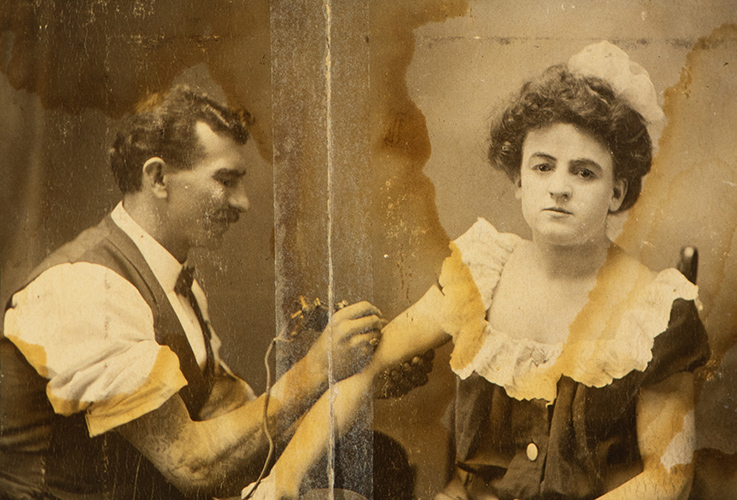Documentary Review: Tattoo Uprising
The new documentary Tattoo Uprising explores the long history and cultural influence of tattooing, tracing the art form all the way back to Biblical times. Referring to the movie as being 40 years in the making, writer/director Alan Govenar makes skillful use of vintage clips and personal archival footage in order to educate modern day viewers about classic tattoo styles, pioneering artists, and the deeply rooted cultural background and continuing evolution of tattooing in terms of being both an art form as well as a means of personal expression.
Essentially, Tattoo Uprising is a personal film which traces director/writer Alan Govenar’s interest in tattooing all the way back to his college days when he entered a tattoo shop for the first time while writing a fieldwork paper for a folklore course. Once inside the studio, Govenar chronicles his strange and oddly off-putting initial encounter with the shop’s wheelchair-bound owner, a character named Leonard ‘Stoney’ St. Clair. The filmmaker goes on to explore the work and personalities of various classic American tattoo artists and their uniquely individual studios, artistic techniques, and practices.
Much to its credit, Tattoo Uprising provides audiences with personal insights from the perspectives of both the individual tattoo artists as well as many of their loyal clients. One of the most interesting aspects of the documentary (at least for film fans) is a rare on-set interview in the Amazon jungle with maverick filmmaker Werner Herzog, who opens up about his Ed Hardy tattoo. The director, who at the time was at work making the movie Burden of Dreams (1982), proves to be an interesting interviewee. While discussing his tattoo artwork, Herzog talks about his preference for death imagery, proclaiming his belief that, “you shouldn’t have your body tattooed without at least one death”.

Early on in the documentary, Cynthia Witkin, a tattoo artist, describes her own tattoo in terms of being “a visualization of myself that I gather energy from… It allows me to be my own person.” This deep connection between people and their tattoos is a key part of the film’s theme. Govenar then goes on to speak with a variety of tattooed individuals who have chosen to decorate their bodies and express themselves through this ancient art form.
The only criticism I have of Tattoo Uprising is that perhaps the overall theme and narrative of the documentary would’ve been better served by devoting more screen time to an exploration of the role pop culture has played in promoting and popularizing tattoos to a whole new generation. Instead, the filmmaker has chosen to include such standard clips as those involving a group of ex-cons being interviewed about their tats while soaking in a hot tub. At one point in Tattoo Uprising, the arrival of MTV and the way in which that channel provided a showcase for tattooed musicians is briefly referenced in regards to how they helped bring tattoos into the mainstream; however, the documentary stops short of taking a more in depth look at this specific cultural phenomena.

Tattoo Uprising has a great 8mm retro look to it which lends the film an authentic quality without diminishing the more kitschy aspects of the subject matter. Over the course of the doc, viewers are introduced to a wide range of interesting and amusing characters who occupy a place within this subculture. We also gain valuable insights and a historical perspective into the art form as it has and continues to evolve and change throughout the years, especially in terms of its importance in Japanese and Polynesian cultures. One of the most memorable aspects of Tattoo Uprising is its humour and sense of fun. A prime example of this can be illustrated by quoting a sign in ‘Stoney’ St. Clair’s shop which reads, “Do not get a tattooed ‘just for the hell of it’ or because a friend called you ‘chicken’, for once it’s there you have to show it to St. Peter”.
Tattoo Uprising is now available on DVD.






